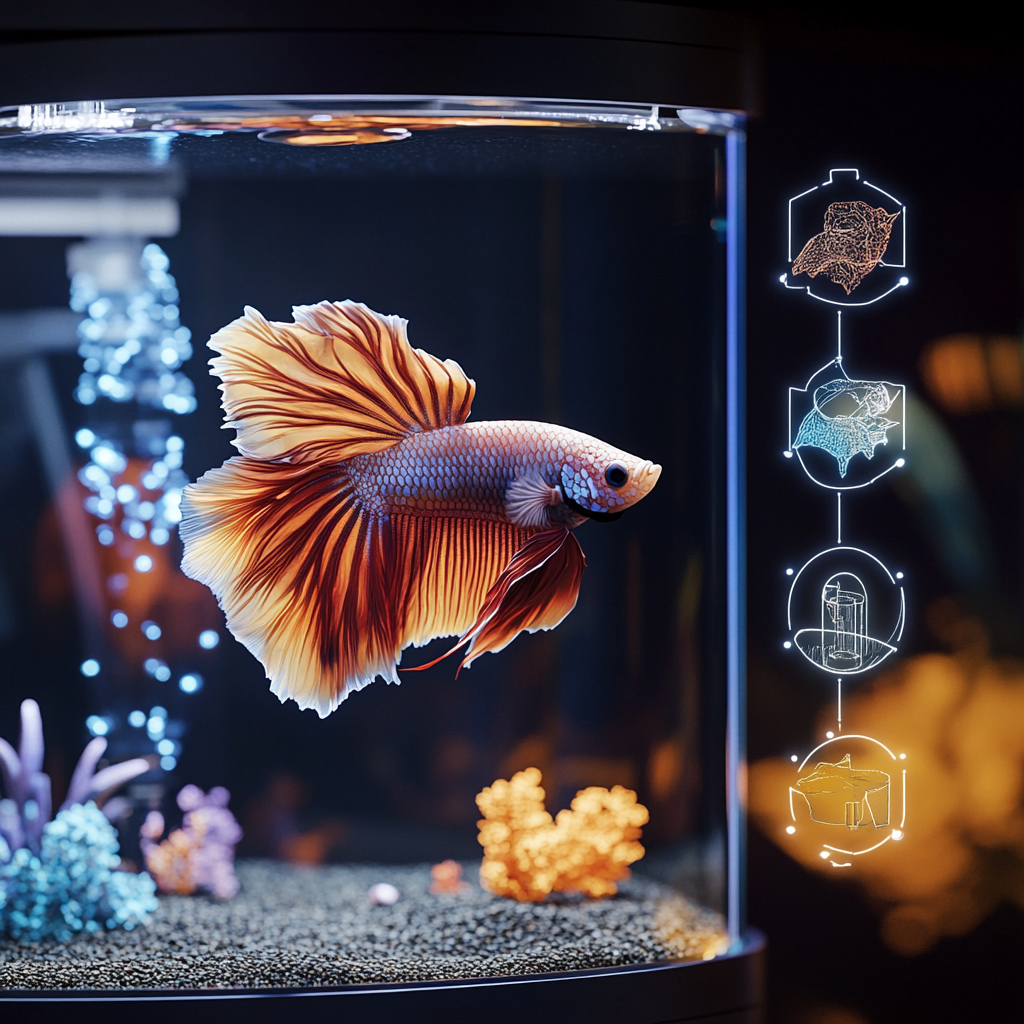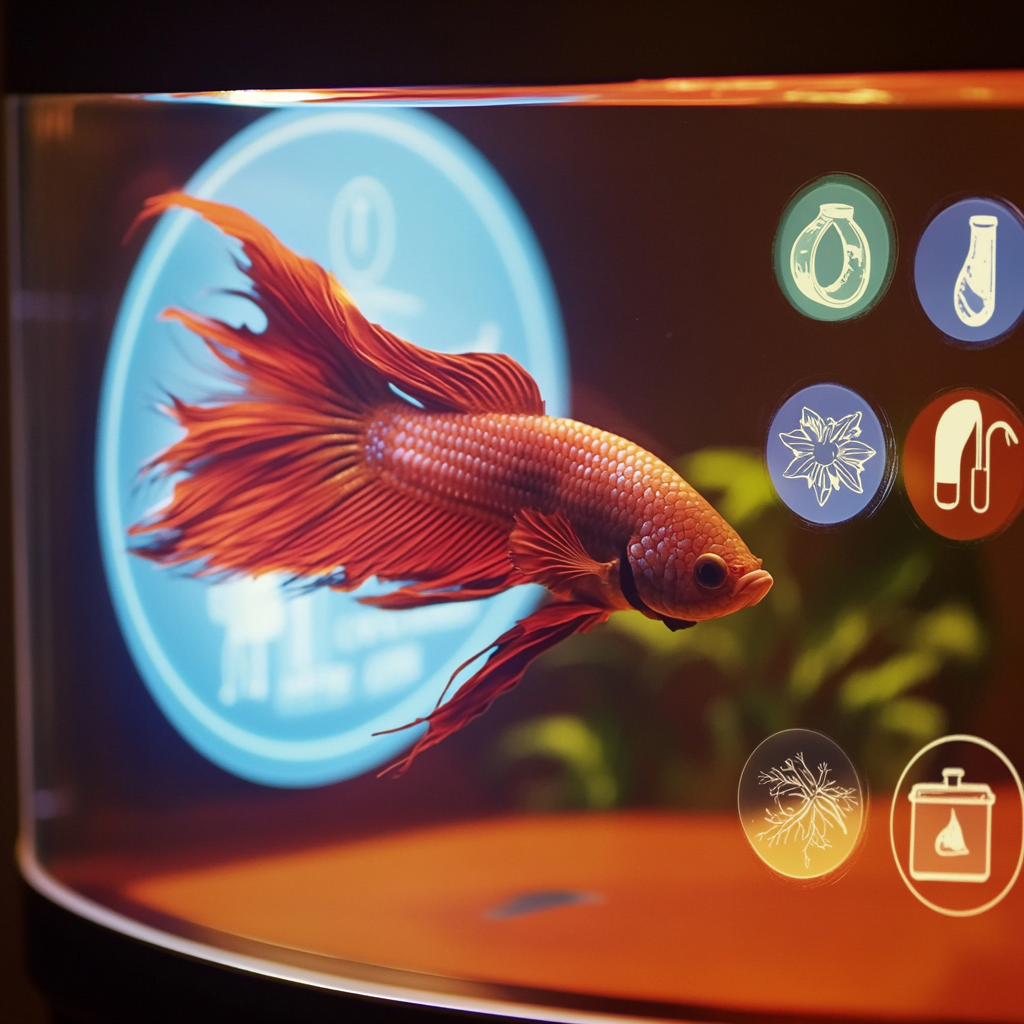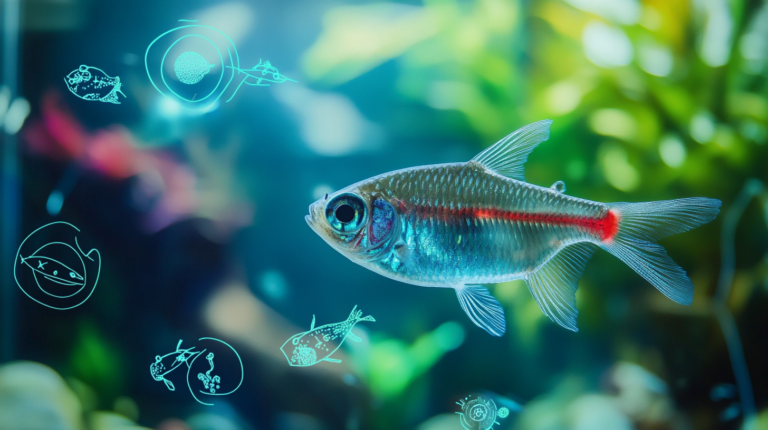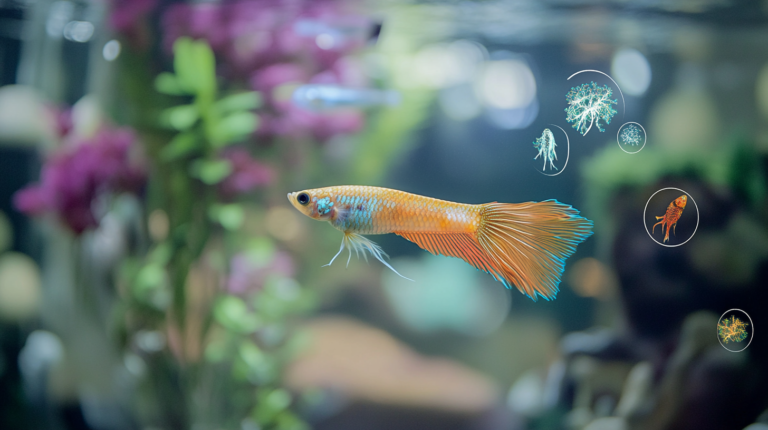Discover the 5 main causes of ammonia poisoning in fish tanks and learn effective solutions to fix water quality problems for healthier, happier fish.
Table of Contents
Maintaining a healthy aquarium environment is crucial for the wellbeing of your aquatic pets. Among the many water quality issues that can affect fish tanks, ammonia poisoning stands out as one of the most common and dangerous problems. Ammonia poisoning in fish tanks occurs when toxic ammonia levels rise above safe thresholds, causing stress, illness, and potentially death to your aquatic companions.
Whether you’re a seasoned aquarist or a beginner just setting up your first tank, understanding the causes of ammonia spikes and knowing how to address them can make all the difference in creating a thriving underwater ecosystem. This comprehensive guide explores the five main causes of ammonia poisoning in fish tanks and provides practical solutions to restore optimal water quality.


What is Ammonia and Why is it Dangerous?
The Chemistry Behind the Toxin
Ammonia (NH₃) is a colorless, water-soluble compound that naturally occurs in aquariums as a byproduct of fish waste, decaying food, and decomposing plant matter. In aquatic environments, ammonia exists in two forms:
- Free ammonia (NH₃): Highly toxic to fish
- Ammonium (NH₄⁺): Less toxic form
The balance between these two forms depends largely on the pH and temperature of your aquarium water. Higher pH levels (alkaline conditions) and warmer temperatures increase the percentage of the more toxic free ammonia form.
How Ammonia Affects Fish Health
Ammonia poisoning affects fish in several devastating ways:
- Gill damage: Ammonia burns fish gills, reducing their ability to extract oxygen from water
- Tissue irritation: Causes inflammation of internal and external tissues
- Stress response: Triggers elevated cortisol levels, weakening the immune system
- Organ failure: Extended exposure can lead to brain damage, organ failure, and death
Even low levels of ammonia can cause chronic stress in fish, making them more susceptible to diseases and shortening their lifespan. The toxic effects of ammonia are cumulative, meaning that prolonged exposure to even small amounts can eventually prove fatal.
Recognizing Ammonia Poisoning in Fish
Before diving into the causes and solutions, it’s important to recognize the signs of ammonia poisoning in fish tanks. Early detection can save your aquatic pets’ lives.
Physical Symptoms
Fish suffering from ammonia poisoning typically exhibit several distinctive physical symptoms:
- Red or inflamed gills: One of the earliest and most reliable indicators
- Red streaks or inflammation on the body and fins: Shows tissue irritation
- Cloudy eyes: Indicates serious systemic effects
- Black or dark patches: Signs of ammonia burns on body
Behavioral Changes
In addition to physical symptoms, fish will display altered behavior patterns:
- Gasping at the surface: Indicates difficulty breathing due to damaged gills
- Lethargy: Fish appear weak and move slowly
- Loss of appetite: Affected fish often refuse food
- Hiding: Fish may spend more time in hiding spots than usual
- Erratic swimming: Including darting, floating sideways, or swimming upside down
If you notice any combination of these symptoms, test your water immediately for ammonia levels. Even readings as low as 0.25 ppm (parts per million) can be harmful to sensitive species.
The Nitrogen Cycle: Foundation of Aquarium Health
Understanding the nitrogen cycle is essential for preventing ammonia poisoning in fish tanks.
How the Nitrogen Cycle Works
The nitrogen cycle is a biological process where beneficial bacteria convert toxic ammonia into less harmful substances:
- Ammonia production: Fish excrete ammonia through their gills, urine, and solid waste
- Nitrosomonas bacteria: Convert ammonia (NH₃) to nitrites (NO₂⁻), which are still toxic
- Nitrobacter bacteria: Convert nitrites to nitrates (NO₃⁻), which are much less harmful
- Water changes: Regular partial water changes remove accumulated nitrates
In a properly “cycled” aquarium, these beneficial bacteria colonies live in the filter media, substrate, and on surfaces, creating a biological filtration system that keeps ammonia and nitrite levels at zero.
Cycling a New Tank
Before adding fish to a new tank, it should be properly cycled to establish beneficial bacteria colonies:
- Fishless cycling: The preferred method that establishes the nitrogen cycle without risking fish health
- Fish-in cycling: A more challenging approach that requires vigilant monitoring and frequent water changes
A fully cycled tank typically takes 4-6 weeks to establish under normal conditions, though this can be accelerated with commercial bacterial starters.
5 Common Causes of Ammonia Poisoning in Fish Tanks
Now, let’s examine the five main causes of ammonia poisoning in fish tanks and how to address each issue.
1. Overstocking: Too Many Fish in Limited Space
Overstocking is one of the most common causes of ammonia poisoning in fish tanks, particularly among beginners.
How Overstocking Leads to Ammonia Problems
- Each fish produces waste containing ammonia
- More fish means more waste and higher ammonia production
- The biological filtration system becomes overwhelmed
- Oxygen levels decrease as fish compete for available oxygen
According to a 2023 survey of aquarium hobbyists, overstocking accounts for approximately 35% of all ammonia-related issues in home aquariums.
Solutions for Overstocking Issues
- Follow the inch-per-gallon rule: A general guideline suggesting one inch of adult fish per gallon of water (though this varies by species)
- Research species requirements: Different fish need different space allocations
- Consider bioload rather than just size: Some species produce more waste than others
- Rehome excess fish: If your tank is already overstocked, consider finding new homes for some fish
- Upgrade to a larger tank: If possible, increase your tank size to accommodate your fish population properly
Proper Stocking Ratios by Tank Size
| Tank Size | Small Fish (1-2) | Medium Fish (2-4) | Large Fish (4+) |
| 10 Gallon | 6-8 | 2-3 | Not recommended |
| 20 Gallon | 10-12 | 4-6 | 1-2 |
| 55 Gallon | 25-30 | 10-15 | 3-5 |
| 100 Gallon | 45-50 | 20-25 | 8-10 |
2. Overfeeding: When Good Intentions Cause Harm
Overfeeding is perhaps the easiest mistake to make and the second most common cause of ammonia poisoning in fish tanks.
How Overfeeding Contributes to Ammonia Spikes
- Uneaten food decomposes, releasing ammonia
- Increased fish waste from excessive food consumption
- Organic debris accumulates in the substrate
- Filter media clogs more quickly, reducing efficiency
Recent research indicates that up to 60% of home aquariums receive too much food, with owners frequently feeding their fish more than they need.
Solutions to Prevent Overfeeding
- Follow the “two-minute rule”: Feed only what fish can consume within two minutes
- Implement feeding schedules: Most adult fish only need to eat once daily; some species do well with fasting days
- Use appropriate portion sizes: A portion size roughly equal to the fish’s eye is sufficient for many species
- Remove uneaten food: Use a net or siphon to remove any food that remains after feeding time
- Choose quality over quantity: High-quality fish food creates less waste and is more nutritionally complete
3. Inadequate Filtration: When Your System Can’t Keep Up
Filtration systems are crucial for maintaining water quality and preventing ammonia poisoning in fish tanks.
How Poor Filtration Leads to Ammonia Problems
- Insufficient biological media for beneficial bacteria
- Filter too small for tank volume (inadequate GPH – gallons per hour)
- Clogged or dirty filter media reducing efficiency
- Poor water circulation creating “dead zones” where waste accumulates
Studies show that filters should cycle the entire tank volume at least 4-6 times per hour for optimal efficiency.
Solutions for Filtration Issues
- Size appropriately: Choose a filter rated for your tank size or larger
- Maintain regular cleaning schedule: Clean mechanical media regularly but preserve biological media
- Never replace all filter media at once: This removes beneficial bacteria
- Consider multiple filtration types: Combine mechanical, biological, and chemical filtration
- Improve circulation: Add powerheads or additional filters for large tanks
- Upgrade when necessary: As your fish grow or if you add more fish, your filtration needs may increase
Types of Filters and Their Effectiveness
| Filter Type | Pros | Cons | Best For |
| Hang-on-Back (HOB) | Easy maintenance, good flow | Limited media space | Small to medium tanks |
| Canister | Large media capacity, customizable | More expensive, harder to clean | Medium to large tanks |
| Sponge | Gentle flow, excellent biological filtration | Limited mechanical filtration | Fry tanks, shrimp tanks, hospital tanks |
| Sumps | Maximum customization, high capacity | Complex setup, space requirements | Large tanks, specialized setups |
4. Poor Maintenance Routines: Neglecting Essential Care
Regular maintenance is essential for preventing ammonia poisoning in fish tanks and maintaining overall water quality.
How Neglected Maintenance Contributes to Ammonia Issues
- Accumulated waste in substrate releases ammonia
- Decaying plant matter increases organic load
- Dirty filter media loses efficiency
- Water chemistry gradually deteriorates
A concerning 42% of aquarium owners admit to performing water changes less frequently than recommended, according to a 2023 hobbyist survey.
Solutions for Improving Maintenance Routines
- Establish a regular water change schedule: Change 10-25% of water weekly or bi-weekly
- Use a gravel vacuum: Clean substrate during water changes to remove trapped debris
- Prune and remove dead plant material: Prevent decay before it starts
- Clean aquarium walls: Remove algae and biofilm that can contribute to poor water quality
- Monitor filter performance: Clean or replace media according to manufacturer recommendations
- Keep detailed maintenance logs: Track water parameters and maintenance activities
Essential Maintenance Schedule
| Task | Frequency | Notes |
| Water testing | Weekly | Check ammonia, nitrite, nitrate, pH |
| Water changes | Weekly/Bi-weekly | 10-25% of total volume |
| Filter maintenance | Monthly | Clean mechanical media, preserve biological media |
| Substrate cleaning | During water changes | Use gravel vacuum |
| Deep cleaning | Quarterly | More thorough substrate cleaning, equipment checks |
5. New Tank Syndrome: The Immature Nitrogen Cycle
New tank syndrome occurs when fish are added to an aquarium before the nitrogen cycle has fully established.
How New Tank Syndrome Causes Ammonia Poisoning
- Insufficient beneficial bacteria to process waste
- Sudden introduction of ammonia sources (fish)
- Unstable water parameters during cycling
- Stress on fish from changing conditions
Statistics indicate that approximately 40% of first-time fish deaths occur due to new tank syndrome.
Solutions for New Tank Syndrome
- Cycle your tank before adding fish: Allow 4-6 weeks for a fishless cycle
- Use bacterial starters: Commercial products can help establish beneficial bacteria more quickly
- Add fish gradually: Introduce fish slowly to allow the biofilter to adjust
- Monitor water parameters closely: Test daily during the cycling process
- Be prepared for emergency measures: Have water conditioners and ammonia neutralizers ready
- Consider “seeding” from established tanks: Use filter media or substrate from mature tanks
Fishless Cycling Method
- Add an ammonia source (pure ammonia drops, fish food, or organic matter)
- Test daily for ammonia, nitrite, and nitrate
- When ammonia drops and nitrite appears, the first stage of cycling has begun
- When both ammonia and nitrite read zero and nitrate is present, the tank is cycled
- Perform a water change to reduce nitrate before adding fish
Emergency Measures: What to Do When Ammonia Levels Spike
Despite your best efforts, ammonia spikes can still occur. Here’s how to handle emergency situations:
Immediate Actions to Reduce Ammonia Levels
- Perform a large water change: Change 50% of the water immediately
- Use ammonia neutralizers: Products like Seachem Prime temporarily detoxify ammonia
- Stop feeding: Reduce additional waste input for 24-48 hours
- Increase aeration: Add air stones to increase oxygen levels
- Remove any obvious sources: Clean visible waste, uneaten food, or decaying matter
- Add extra biological media: Temporarily boost biological filtration capacity
Long-term Solutions Following an Ammonia Spike
After addressing the immediate crisis:
- Identify the root cause: Determine which of the five causes contributed to the spike
- Adjust stocking levels if necessary: Consider whether your tank is overcrowded
- Review maintenance routines: Establish more regular cleaning schedules
- Upgrade filtration if needed: Ensure your system can handle the bioload
- Test water frequently: Monitor parameters closely until stability is achieved
- Consider adding live plants: Plants naturally absorb some ammonia compounds
The Role of Plants in Controlling Ammonia
Aquatic plants can be valuable allies in preventing ammonia poisoning in fish tanks.
How Plants Help Reduce Ammonia
- Direct ammonia uptake: Plants use ammonia as a nitrogen source
- Oxygenation: Photosynthesis increases dissolved oxygen
- Competition with algae: Reduces nutrients available for algae growth
- Habitat for beneficial bacteria: Plant surfaces host nitrifying bacteria
Best Plants for Ammonia Control
Several plant species are particularly effective at ammonia absorption:
- Water Sprite (Ceratopteris thalictroides): Fast-growing floating plant
- Amazon Sword (Echinodorus amazonicus): Hardy, adaptable to various conditions
- Hornwort (Ceratophyllum demersum): Excellent floating or planted option
- Java Fern (Microsorum pteropus): Low maintenance, suitable for beginners
- Anacharis/Elodea (Egeria densa): Rapid growth, high nutrient uptake
Balancing Plant Load and Fish Stock
While plants help control ammonia, they require proper balance:
- Too few plants won’t significantly impact ammonia levels
- Too many plants can cause oxygen depletion at night
- Decaying plant matter contributes to ammonia if not removed
- Some plant species require additional CO2 and fertilization
A general guideline suggests covering approximately 60-70% of the substrate with plants for optimal ammonia control in planted tanks.
Prevention: Best Practices for Long-term Water Quality
Preventing ammonia poisoning in fish tanks is always preferable to treating it. Here are key preventative measures:
Regular Testing and Monitoring
- Invest in quality test kits: Liquid tests are generally more accurate than strips
- Establish baseline parameters: Know what’s normal for your specific tank
- Keep testing logs: Track trends over time
- Test more frequently during changes: New fish, new equipment, or after medications
Choosing Compatible Fish Species
- Research before purchasing: Understand the specific needs of each species
- Consider adult size: Many fish are sold as juveniles but grow much larger
- Assess temperament: Aggressive fish cause stress, which increases waste production
- Evaluate special requirements: Some species produce more waste or require specific water parameters
Proper Equipment Selection
- Filters: Choose models with robust biological filtration capacity
- Heaters: Maintain stable temperatures to reduce stress
- Water conditioners: Use products that neutralize chlorine and chloramine
- Backup systems: Consider battery backups for essential equipment
Advanced Techniques for Ammonia Management
For experienced aquarists or those with challenging setups, these advanced techniques can help maintain optimal water quality:
Live Bacteria Supplements
Modern aquarium supplements contain specifically cultivated beneficial bacteria strains:
- Cycling products: Accelerate the establishment of new tanks
- Maintenance products: Replenish bacteria after medication or water changes
- Crisis products: Help recover from ammonia spikes
Chemical Filtration Media
Various specialized media can help control ammonia:
- Zeolite: Natural mineral that adsorbs ammonia
- Activated carbon: Removes various toxins and improves water clarity
- Purigen: Synthetic polymer that removes organic waste before it breaks down
Automated Monitoring Systems
Technology offers new solutions for ammonia management:
- Digital monitors: Provide continuous readings of ammonia levels
- Alert systems: Send notifications when parameters shift outside safe ranges
- Automated dosing: Some systems can automatically add treatments when needed
Recommended Pet Products on Amazon
Title: Recommended Pet Products for Ammonia Control
- API Freshwater Master Test Kit Essential for monitoring ammonia, nitrite, nitrate, and pH levels
- Seachem Prime Water Conditioner Detoxifies ammonia and removes chlorine/chloramine
- Fluval 07 Series Performance Canister Filter Provides excellent mechanical, chemical, and biological filtration
- Fritz Aquatics TurboStart 700 Nitrifying Bacteria Accelerates the establishment of beneficial bacteria colonies
F A Q About Ammonia Poisoning in Fish Tanks
How often should I test for ammonia in my aquarium?
For established tanks with stable parameters, testing once per week is generally sufficient. However, you should test more frequently in the following situations:
- New tanks (daily during cycling)
- After adding new fish (daily for a week)
- Following medication treatments
- When fish show signs of distress
- After any significant maintenance activities
Can fish recover from ammonia poisoning?
Yes, fish can recover from mild to moderate ammonia poisoning if the issue is addressed promptly. Recovery depends on:
- The severity and duration of exposure
- How quickly ammonia levels are reduced
- The overall health of the fish prior to exposure
- The species (some are more resilient than others)
Provide optimal conditions during recovery, including pristine water quality, reduced lighting, and minimal disturbances.
What’s the difference between ammonia and ammonium?
Ammonia (NH₃) and ammonium (NH₄⁺) exist in equilibrium in aquarium water:
- Ammonia (NH₃) is highly toxic to fish
- Ammonium (NH₄⁺) is much less toxic
The balance between these forms depends primarily on pH:
- At higher pH (>7.0), more toxic ammonia predominates
- At lower pH (<7.0), less toxic ammonium predominates
Most test kits measure total ammonia nitrogen (TAN), which includes both forms.
Can I use ammonia-removing products instead of doing water changes?
While ammonia-removing products can help in emergencies, they should not replace regular water changes for several reasons:
- They don’t remove nitrates or other accumulated pollutants
- Many only temporarily bind ammonia rather than removing it
- The binding effect wears off over time
- They don’t address the root cause of ammonia problems
Water changes remain the most effective way to maintain overall water quality.
Why do I have ammonia in my tank even with a good filter?
Several factors can cause ammonia to appear despite good filtration:
- Overcrowding exceeding filtration capacity
- Recent deaths of fish or invertebrates
- Filter media recently cleaned or replaced (reducing bacterial colonies)
- Medication killing beneficial bacteria
- pH fluctuations releasing bound ammonia
- Filter malfunction or power outage
Always investigate the root cause rather than simply treating the symptom.
Explore More Pet Care Tips on BlithePet
For more expert guidance on maintaining a healthy aquarium environment and preventing issues like ammonia poisoning in fish tanks, visit BlithePet for comprehensive guides, product reviews, and personalized recommendations. Our team of aquatic experts provides regular updates on the latest aquarium care techniques and technologies to help you create the perfect underwater world for your aquatic pets.
Conclusion
Ammonia poisoning in fish represents one of the most significant threats to aquarium health, but with proper understanding and management, it’s entirely preventable. By addressing the five key causes—overstocking, overfeeding, inadequate filtration, poor maintenance, and new tank syndrome—aquarists can maintain a safe, thriving environment for their aquatic pets.
The nitrogen cycle stands as the foundation of aquarium health, converting toxic ammonia into safer compounds through beneficial bacterial activity. Supporting this biological process through proper tank setup, careful stocking, appropriate feeding, and regular maintenance creates a stable, balanced ecosystem.
Remember that prevention always proves easier than treatment. Regular testing, immediate action when issues arise, and consistent care routines will help ensure your underwater community remains healthy and vibrant for years to come.
Have you encountered ammonia issues in your aquarium? Share your experience and solutions in the comments below, and help fellow fish enthusiasts learn from your aquatic journey!





